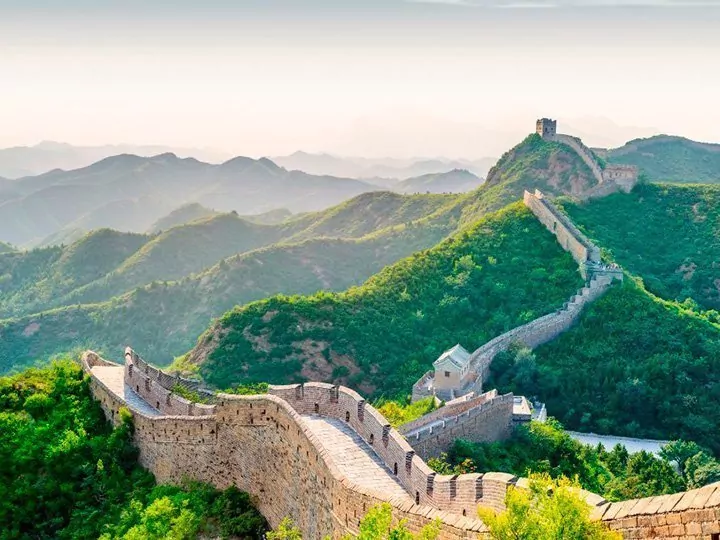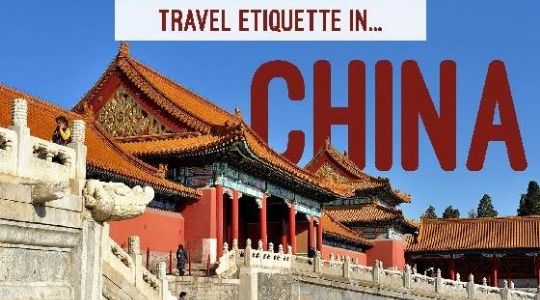20 Great Reasons For Deciding On China Tour Sites
Wiki Article
Top 10 Tips For Shopping For Regional Specialties In China
1. Do your research prior to deciding on a travel tip. Learn about the places that is known for. For instance, Suzhou for silk, Jingdezhen for porcelain and Tibet for Thangka painting.
Pro: You can focus your energy on shopping and cut down time.
Con: Needs preparation and familiarity with regional highlights.
2. Buy Local to Ensure Authenticity
TIP: Buy products directly from the place of origin to guarantee the authenticity and quality of the item.
Pro: Reduces the risks of copyright goods, and also helps local artisans.
Cons: Travel to rural or less tourist-friendly regions might be required.
3. Take a look at an artist's work or a workshop
Tips: Look for small workshops or artisan hubs in lieu of the typical shops.
Pro: You'll get an knowledge of the art, and you can purchase directly from the creators.
Pro: Handmade products are more expensive and more difficult to purchase.
4. Understanding the Cultural Significance
Find out the cultural history of items like jade carvings, cloisonne and calligraphy.
Pro: It makes you appreciate the product and give them a deeper meaning.
Pro: It may take a while to grasp all the cultural nuances.
5. Check Quality Carefully
Verify the quality of embroidery ceramics, tea, and embroidery to ensure that they meet your standards.
Pro: Avoids disappointment by making sure you receive what you spend for.
Cons: Some knowledge is required to recognize the best quality goods.
6. Beware of mass-produced products
Check out unique, handmade products instead of mass-produced replicas.
Pro: You will take home something that is truly valuable and special.
Con: Genuine workmanship is expensive and difficult to locate.
7. Compare Prices
Visit several shops or stalls so that you can compare prices on the exact same product.
Pro: It assists you to identify reasonable prices and avoid being overcharged.
Cons: Can be time-consuming especially in large markets.
8. Buy Tea from reputable vendors
Tip For those who live located in a region such as Hangzhou, Fujian or Longjing Tea (Dragon Well), or Tieguanyin Tea, make sure to visit tea houses that offer these teas.
Pro: Assures premium quality and authentic.
Con: Teas of premium quality can be expensive and is difficult to prove by those who are new to the industry.
9. Local Customs
In some areas in certain areas, sellers may expect that you negotiate.
Pro: Adds an enjoyable cultural aspect to your shopping.
Con: Not understanding rules can lead to awkward interactions.
10. Pack Carefully
Tip: Plan for the way you'll carry fragile or bulky regional specialties like ceramics or silk back home.
Pro: Prevents the damage to your items and makes sure they arrive in good condition.
Con: Adds logistical challenges and possible costs for shipping.
The Benefits of Shopping for Regional Specialties
Unique Souvenirs. These aren't available in other items elsewhere.
Cultural Immersion: By purchasing local products, you can be a part of the history and craft of your region.
Direct purchases made from artisans helps local economies.
The cons of shopping regional specialties
Authenticity Concerns : The risk of purchasing copyright or lower-quality versions.
The transportation of heavy and fragile objects could be a problem.
The authentic regional goods are usually expensive, especially handcrafted products.
These guidelines will enable you to purchase memorable items on your trip to China. Take a look at the top rated get insights on this tourist spot for more recommendations including shopping in nanjing, ganden temple, shenzhen golf club, lijiang tour maps, eating in fuzhou, tours for the disabled, shopping in dunhuang, lion forest garden suzhou classical garden, luoyang peony and wangcheng park, shopping in nanjing and more.

Top 10 Tips For Visiting Temples At Different Seasons In China
1. Visit During the Off-Season (Autumn/Winter)Tip Think about visiting famous temples in China during the off-season (autumn or winter), typically from November through February. It is a time that there are less people around and temperatures are cooler.
Pro: The experience is less packed and more contemplative.
Cons: It could be colder and less comfortable visiting temples in the cold.
2. Be prepared for extreme weather
Tip: Temperatures can vary greatly in different seasons. Winters can be brutally cold, while summer temperatures are usually hot. Make sure you check the weather and take the appropriate precautions.
Pro tip: Be prepared for all weather conditions, and take pleasure in your journey in comfort.
Con: Packing to accommodate the extremes of seasons can be a hassle If you're traveling light.
3. Visits in Spring and the summer to see Vibrant Flora
Tip: Visiting temples in spring and summer allows you to view gorgeous gardens, flowers in bloom, and lush landscapes around the temples.
Pro: Gorgeous landscapes add to the overall enjoyment of exploring the grounds of the temple.
Con Cons: Summer can be hot and crowded, particularly during national holidays.
4. Think about Festivals, Special Events, and Other Activities
Plan your visit to coincide with festivals that are traditional, such as the Chinese New Year (January/February), or the Mid-Autumn Festival. These seasons are full of festivities, rituals as well as the opportunity to observe the temple's vibrant culture activity.
Pros: The temples offer an experience that is distinctive and lively, featuring a variety of traditional events.
Con: Temples are packed, and hotel prices can be high in the time of festivals.
5. Avoid the Peak Holiday Seasons
Avoid visiting temples during peak tourist times (e.g. Chinese Year of the Pig, Golden Week October) because they could be crowded.
Pro: Enjoy a peaceful vacation without the crowds.
Con: You'll miss certain special events during peak periods.
6. Check for Winter Closures of Temples.
Tips: Some temples might have limited hours or be closed during winter's colder months, in particular in remote regions or northern regions. Be sure to check before visiting.
Pro: Avoids unnecessary trips and ensures you can organize your other activities in advance.
Con: Certain temples could have hours that are reduced or completely closed during repairs, which can lead to disappointment.
7. Early Morning Visits to Summer
If you're going to the temple in the summer months, be sure to get there early in order to avoid the heat of midday. Many temples have their doors opened early in the early morning. The temples are quieter and there are fewer people.
Benefits Get peace and quiet without the crowds.
Cons Cons: Getting up early could not be ideal for everyone.
8. Prepare for rain during the summer
The summer season can bring a lot of rainfall, especially to southern China. If you're planning to visit during this time, pack an umbrella or rain gear to ensure you are comfortable.
Pros: You will be able to take pleasure in the beauty of temples even if there is rain.
Con: The rain may disrupt outdoor activities or make the grounds of temples slippery.
9. Explore temples in the mountains during the autumn
Tip: Visit temples in the mountains like Mount Wutai (or Mount Emei), during autumn. The weather is pleasant and the autumn leaves make an incredible scene.
Pro A: Cooler temperatures are perfect to hike and explore nature.
Con: Popular mountain shrines still draw huge crowds during holidays and weekends.
10. You can use the lunar calendar to plan certain dates for your
Tip: A large number of temples in China follow the lunar calendar, and certain rituals or occasions are tied to certain dates of the lunar calendar. To attend events like Buddha's Birthday or the Lantern Festival in China, you must check out the lunar calendar.
Pros Unique cultural experiences and deeper understanding of local religious practices.
Cons: You may have to do additional research and planning around the lunar calendar. Also, events may not be in sync with your travel dates.
The advantages of a seasonally scheduled excursion to Chinese temples
Less crowds: Visits in the off-season are more peaceful and more contemplative.
Cultural events: These festivals offer a deeper insight into the local religious and culture traditions.
Scenic beauty: Visits during the fall or spring months can offer stunning scenery with lively gardens that surround temples.
Cooler temperatures Autumn and winter are ideal for exploring temples.
Pros and Cons of Visiting Chinese Temples during the season
Unpredictable Weather: Winter can be cold, while summer may be hot. Both weather conditions could affect your comfort.
Temple Closures Certain temples might be closed or have limited times of operation during the harsh weather conditions or during the off-season.
Crowded during Festivals: Popular holidays and festivals can bring huge crowds that can make it difficult to fully appreciate the temple's tranquil atmosphere.
Limitations: You may not be able to participate in certain celebrations or events during the season in the event that your visit falls outside of the correct timeframe.
Select the appropriate time of year to visit China's most renowned temples and plan accordingly. This will ensure you will have a memorable trip. Understanding the seasonal dynamics can make sure you get the most enjoyment from your trip, whether you want peace and quiet or cultural celebrations. View the top rated view information about this spot for blog info including shanghai portman acrobatic show one of the best acrobatic shows in shanghai, datong beijing high speed railway schedule and timetable, honey lake country club, chinese knot which has a long history and a symbolic meaning, ancient football in china cuju in ancient china, hua diao the most famous shaoxing yellow wine, top three buddhist temples in chengdu, wuzhi mountain wuzhi shan five finger mountain, shopping in suzhou, eating in dunhuang and more.
